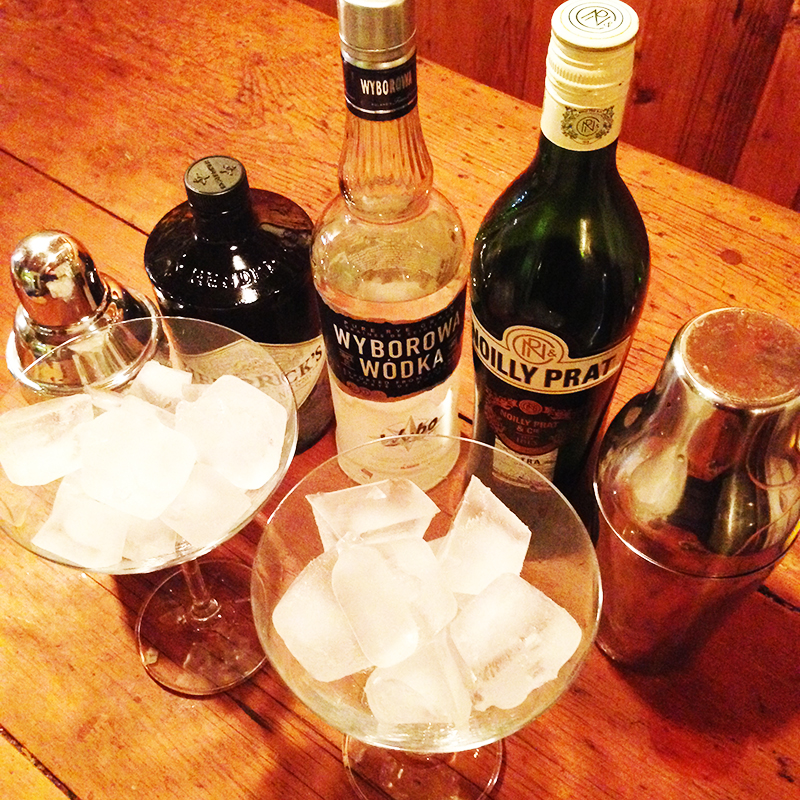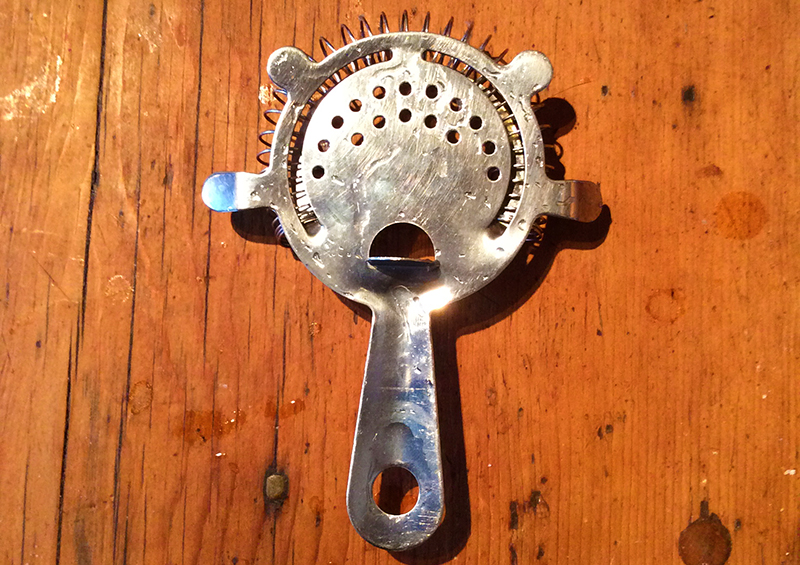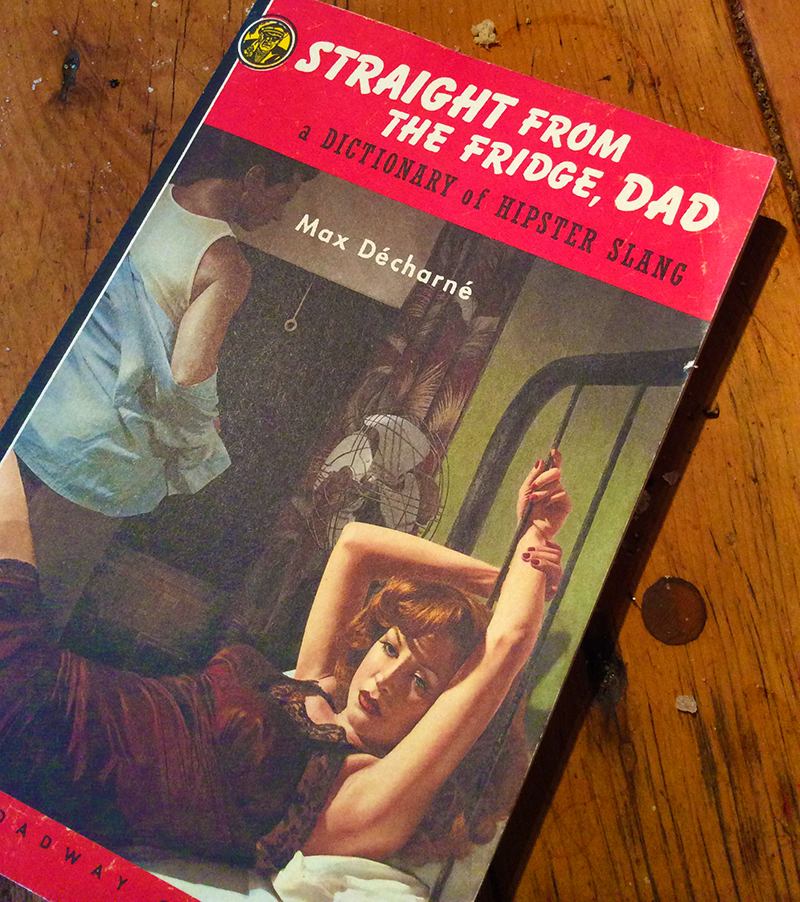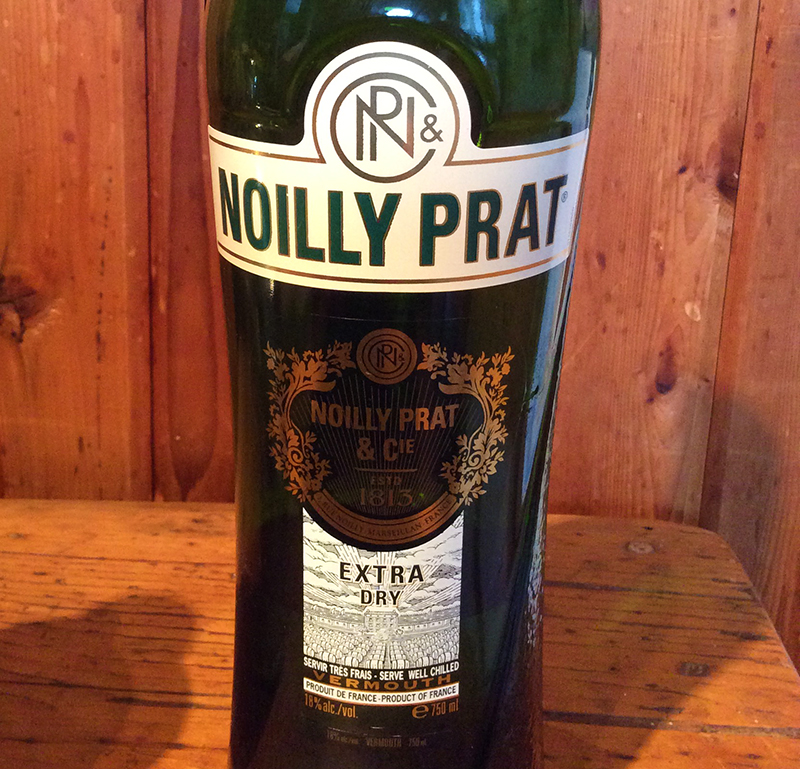
Honestly, writing about the martini is tricky, probably even foolhardy (Side bar: apparently Tolkien’s name comes from an old German word, tollkhun, meaning foolhardy, feel free to use that info to get into someone’s pants, you’re welcome). People can be fanatical about this drink and their views about it tend to be written in stone. There’s usually little room for discussion, and conversations can become downright vicious if martinistas feel their beliefs have been challenged in any way. Kinda like politics, but with more relevance. Personally I wonder whatever happened to sip and let sip. I’m a damn hippie I guess.
However, since you kind D&C folks are tolerant, amiable, and dare I say it, civilized people, let me share with you my views on this iconic drink, and please let me know yours. Cheers to being civil to one another, even when embroiled in virulent disagreement. A difference, no matter how grievous, for example about paella ingredients, is no excuse, not in a thousand years, to tweet that you shit on the graves of somebody’s ancestors. No, I’m not making that up, that actually happened.
The beauty, elegance and magic of the martini is (a bit like a with a margarita pizza), that you can’t hide anything behind extra ingredients or showy garnishes. There’s no space for deceit, there’s no way you can fudge it and come out on top. There’s no sugar or juice to cover bad ingredients, no room for sloppy technique, and as to proportions they need to be perfect, either you nail it or you throw it out. It’s like a Zen stone garden for your mouth. What is the sound of one hand clapping? Who cares, have a martini.
A classic martini (let the tipsy flame wars begin) is basically 3 ounces of gin, one ounce of dry vermouth, STIRRED over ice and poured into, appropriately, a martini glass, garnished with an olive or a lemon peel. Before I dive a little bit deeper, as per usual, let me share my version, so you can taste it while perusing the rest of this post. Be warned, I break most of the above guidelines.
My dirty (Princess) martini
- 1.5 ounce of Hendrick’s gin
- 1.5 ounce of Polish vodka (always Wyborowa)
- 0.75 ounce of dry vermouth, in the best of worlds it can only be Noilly Prat
- 2 small teaspoons of olive brine
- 3 queen olives
Time is of the essence, have everything at hand and no lollygagging. The glasses are chilled, obviously. We are not savages.


Olives and brine go into the glass first. Pour the alcohols into a shaker just filled with ice (as in, not twenty minutes ago) and shake like the dickens until too cold to hold. I like to pour through a Hawthorne strainer, because combined with my shakers (BTW, post about shakers coming up soon) it creates less of an ice dam effect than when using the built-in filters. Take the first sip immediately after pouring (that’s why I rarely order it in bars), while still cloudy and with little flecks of ice floating on top (no flecks means your shaking lacked lustre, put some Viking into it!). See and appreciate the goosebumps on your arms. Congratulate yourself. You have done well.
This is how we do it.

So, a couple of points to address right away, why shaking instead of stirring? No, it is not because of Bond James Bond, but rather because of empiricism. After extensive tests, it’s just what we liked better in terms of dilution, mouthfeel and those little flecks of ice that remind you how everything is transient so you might as well enjoy them quickly. There are two classic arguments against shaking a martini (or a Manhattan for that matter): A) The drink gets over diluted when you shake, B) it comes out cloudy.
Well, A) is a matter of taste, comparing both side by side (see what I go through for you guys?), I really could not tell if one was stronger then the other by taste alone, but the stirred one did have a thicker mouthfeel, so possibly yes. On the other hand, I believe you can get drinks much colder when shaking them, plus that’s when you get the ephemeral icebergs, so there you go, preferences. But go forth and explore, see what floats your own boat.
As for B), well it is a small price to pay for the perfect temperature drink. Also they clear up within 30 seconds, if you haven’t finished your drink by then that is. It’s an old bartending rule to stir drinks that are made only with alcohol, and shake those that contain juices or syrups, but do as thou wilt shall be the whole of the law.

You probably also noticed that we combine gin and vodka, and I agree, at this point it should no longer be rightly called a martini, but what can you do? It’s my kitchen and I’ll cry if I want to. It’s our version of the martini and this is why I gave it a slightly different name. I find there’s a pleasant rounding off of the gin flavours, in short, it works for us. Please don’t tell me you shit on the graves of my fore-bearers, I don’t think their shades would take it kindly, and you probably don’t want them to visit you and give you nasty dreams for the next six years. Yeah, my ancestors don’t fuck around.
Some of you might even balk at the brine, well that’s one of the classic variations, approved by none other than Franklin Delano Roosevelt (he travelled with a small portable bar in a little case, and he did play a certain role in keeping the world free, good man). As for the three olives, again, a matter of taste, but sometimes also of after work hunger, always remember drinkskultur rule #1. My wife is so picky precise about them that they need to be a specific brand (and not room temperature, straight from the fridge). Sidebar: “straight from the fridge” is 1950’s slang meaning cool. As in “Johnny was the kind of cat that never blew his top, even while racing his hot-rod Lincoln he was straight from the fridge.”

Like I said, this drink is so Spartan in ingredients and flavours, that the smallest deviation is immediately felt. That’s why there was a real crisis at the Manor when the Quebec liquor board and the Ontarian one stopped stocking Noilly Prat vermouth (what fuckery). Crisis I tell you. You would not believe the shenanigans that were employed to procure some bottles. Even now the supply is touch and go, it’s wise to stock up. In fact I just checked on their websites, they’re running out again, cock knocking bastards! In the pinch of a pinch I could use Dolin dry vermouth, but it is only barely more accessible. First world problems yeah?

OK, hopefully by now you have a glass in your hand and goosebumps on your arms and you can sit down and read in blissful martinity (i.e. the early signs of alcohol induced mellowness) about less controversial stuff, like its origins…
Well, actually the controversy continues. I know of five origin stories, ranging from a hotel in New York city, an earlier drink called the martinez, or a mixture of San Francisco and a town called Martinez (though two versions of that one), an Italian fellow named Martini, and even Holland is sometimes thrown into the mix, take your pick. One thing, perhaps the only thing, that everyone seems to agree upon, is that it is the quintessential American cocktail, I mean the bald eagle has nothing on this drink in terms of a national icon. It was known and kicked around for roughly 50 years in the States before being made popular abroad by… can you guess? If you yelled out ERNEST HEMINGWAY at the top of your lungs, you would be correct. Of course you would. The drink makes an appearance in his 1929 classic A Farewell to Arms, where it is said to make one feel “almost civilized”. Hemingway mentions the martini four times in this novel and twice describes it as cool and clean. We agree.
One drink certainly will make you feel more civilized, but it goes downhill in a hurry after that. Trust me on that one, because as the famous quote (by James Thurber) goes “One martini is all right. Two are too many, and three are not enough.” After three is a land you should very seldom travel, it leads to all sorts of silliness, and possibly waking up in Atlantic City. You might also suddenly think you are irresistible and start saying things like “let’s get you out of those wet clothes and into a dry martini” (most often attributed to Mae West), or in behaviour echo Dorothy Parker (sort of a female counterpart to Hemingway it seems): “I like to have a martini, two at the very most, after three I’m under the table, after four, I’m under my host.” I think there are more quotes about martinis than any other alcohol. Let’s end this segment with Dean Martin’s opinion of this drink: “It may not make life’s problems disappear, but it’ll certainly reduce their size.”
For a while anyways, but sometimes that’s all we get. I’ll drink to that and well said sir.
I’ve been told my posts are occasionally too long, but bear with me a little longer. As you no doubt know, what we today call a martini is in fact a dry martini, as in made with dry vermouth. Like a lot of drinks, in the first half of the 20th century, it could be made sweet (with red vermouth), dry, or perfect (half sweet, half dry vermouth, sometimes also called medium). However, the dry martini has become so ubiquitous as to completely eclipse other types and by itself assume the mantle of “martini”. The amount of vermouth, even the dry one, has also changed, the Savoy cocktail book of 1930 gives the recipe 2 parts gin 1 part dry vermouth, that’s a lot of vermouth by today’s standards. Something of a race for the driest martini seems to have followed. General Montgomery is said to have liked his martinis with a gin to vermouth ratio of 15 to 1 (the same ratio of troops he needed to have in his favour before going to battle his detractors would say, one story blames this insult on Hemingway who despised Montgomery’s “prudence”). The winner of that driest martini fight, however, would have without contest, been another epic drinker: Winston Churchill.
A Churchill martini is either A) gin poured while looking at an open bottle of vermouth, B) gin poured while light from the sun goes through a bottle of vermouth and touches your glass or shaker or C) in the absence of vermouth, you could mix your drink while looking in the direction of France (dry vermouth is, of course, also known as French vermouth). So basically Churchill drank gin neat and called it a cocktail, probably for PR reasons. I’m having a martini sounds way better than I’m drinking gin straight, the latter one has much more of an English hobo vibe.
There are about six, more or less classic variations on the martini, and it is interesting to note how much of a difference in taste they produce. The classics are of course olives or lemon peel, both excellent, the dirty (with brine) is a bit more exotic, and some people even frown upon it (peshe!). If you use black olives instead of green ones, you have a Buckeye martini, quite tasty, very rare. If you drop some pickled cocktail onions it becomes a Gibson (one of my favourites, and where the name comes from is also something of a mystery, but you’ll have to buy me a drink to hear about it). Beyond that, the world’s your oyster, explore it. Cucumber slices, different citrus peels, gherkins, maybe even a chili pepper thinly sliced (ooooh, I’m going to have to try that), and if a snobbish martinista feels justified in telling you how you should drink your martini, remind them that agreeing to disagree is possibly the height of civilization, and no need to be uncivil about it.

Cheers and here’s to having a drink together soon.

Here’s one for you, urban legend attributes these as Humphrey Bogarts last words:
“I should never have switched from scotch to martinis.”
Probably false, but a statement I can understand… Especially after that second martini….
Yes, it is a very slippery slope, possibly with a bottom of broken glass shards, that awaits you after the second martini. I think the issue is how damn fast we drink them and the fact that they’re pure booze. It’s a bit like being caught in an avalanche.